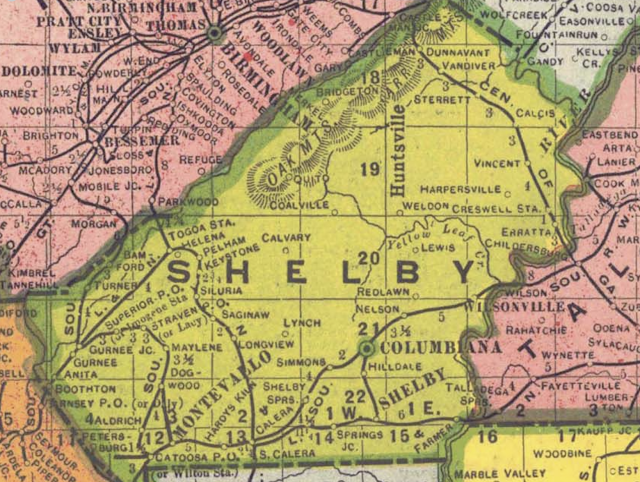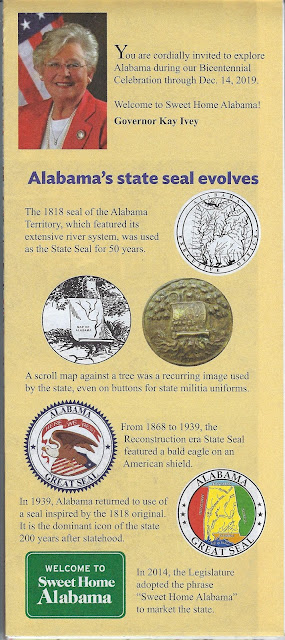We live in Pelham, so naturally I've done quite a few pieces over the years about the city and its history. Several have featured maps older than this one, which is similar to a 1985 Hoover map I wrote about in September 2024. I have a third one of Shelby County, and I may post about it one day.
Pelham was incorporated on July 10, 1964, although the town dates back to 1820 when it was known as Shelbyville and the seat of Shelby County. That status only lasted until 1826, when Columbiana replaced it. The Shelbyville name remained until soon after the Civil War when a change honored Confederate cavalry officer Major John Pelham. For a bit more of history, see my post on Pelham in the 1880s.
Thus this 1989 map commemorates the 25th anniversary of incorporation. We moved to town in 1985, and I've discussed some of these places in that linked post. Let's see how many of these businesses and landmarks are still around or that I remember.
The map features several government buildings that haven't changed, such as the post office, city hall [which has had extensive interior upgrades] and fire station #2. Highway US 31 had already been renamed Pelham Parkway. Other entities still operating include Oak Mountain State Park, Pelham Cemetery, the main City Park and Pelham High School. Businesses like Cracker Barrel, Southern Heritage, Alabama Power, Goodyear Tire Center and Blue Water Park haven't changed much either.
Some places have different uses today. The Bradford Center is now a part of Shelby County Schools, the Linda Nolen Learning Center. K-Mart became Old Time Pottery. Valley Elementary School, which both our kids attended, is now the Campus 124 retail and city park complex. First Baptist Church built a huge new facility, and Skate Time became the church's annex. The Food World Plaza is no more; it's now the Pelham Place Shopping Center. Mi Pueblo Supermarket replaced Food World, where our son worked during high school. China One, later Cafe, was an Asian restaurant we frequented in the early years of our days in Pelham. The business eventually closed and has been replaced by Wok On In.
Some things on this map are simply gone. Fran's Restaurant, opened in 1962, closed in September 2013. The small retail strip where it and the Pelham Barbershop were located is now an empty lot. The Methodist Church, the first religious group in the city, occupied that corner from 1898 until October 2006, when it moved to Shelby County 11. The sanctuary, built in the 1940s was demolished; the new Family Life building remains. Demolition of Oak Mountain Amphitheater is expected later this year.
Well, all things must change, more or less. Take a look at how empty Helena Road is up to the high school and think about all the businesses, etc. located there now.
The last two images are excerpts giving most of the locations in a hopefully more readable size. I've written a blog post about Pelham as we knew it in 1985. A good source for Pelham history is Pelham Memories: A Pictorial History by Bobby Joe and Diane Seales [2008].
Town Square Graphics, Inc, the Georgia company responsible for designing this map was formed in 1988 and dissolved in 2010.



















































